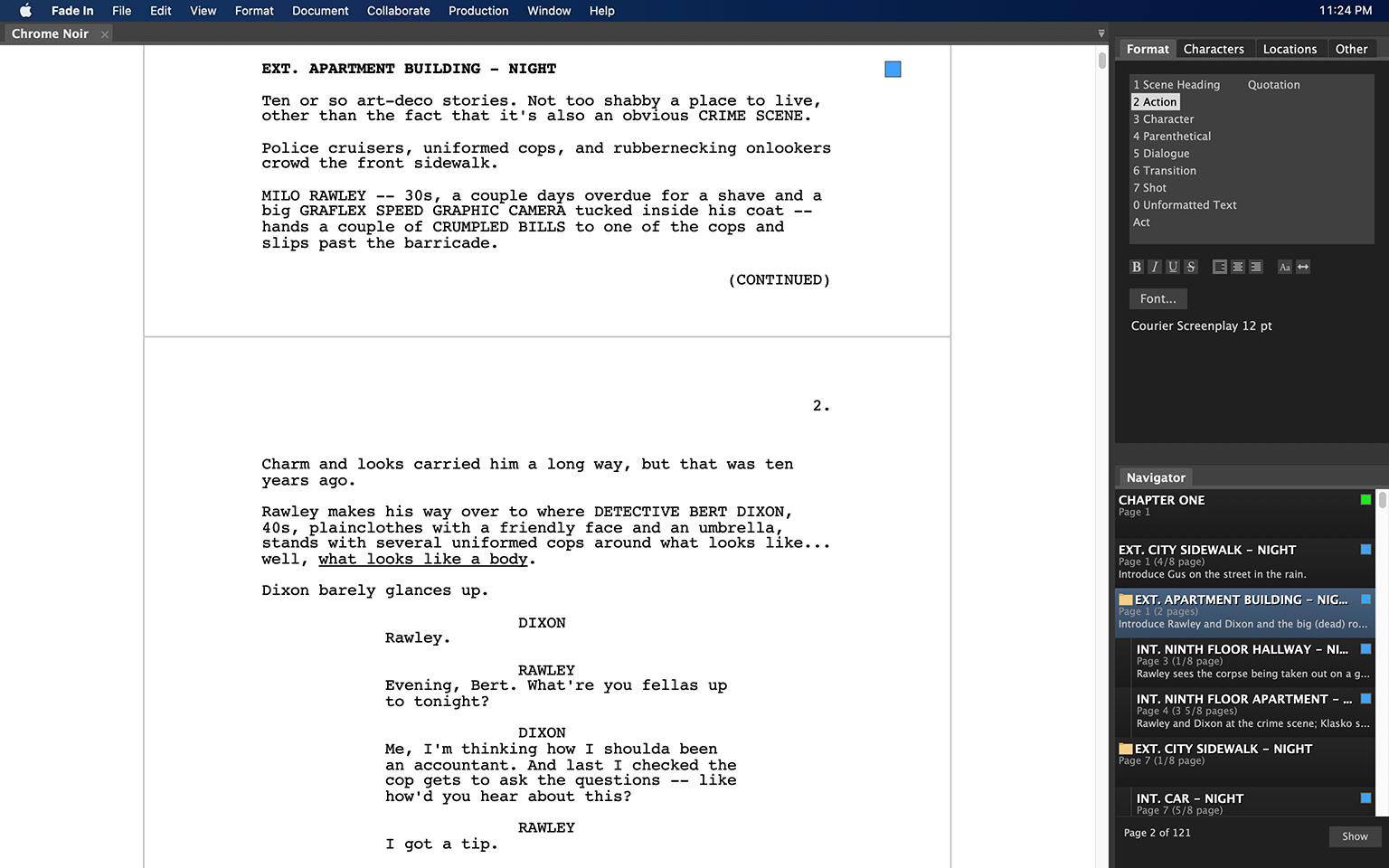Fade In Professional Screenwriting Software is the most advanced software used by professionals writing for motion pictures, television. Because you're writing a screenplay — or a teleplay or stage play or any other kind of script.
Fade In is a screenwriting app in a world full of screenwriting apps. Where there once was only one or two big screenwriting software packages — the venerable Final Draft and Movie Magic Screenwriter — now there are several upstarts, seeking to usurp the de facto Final Draft throne. Enter, created by General Coffee Productions. This screenwriting app rakishly steps into our limelight not as a copycat, but as a would-be kingslayer to Final Draft. Take note ye humble scribes: for a chunk less than its biggest competitor, Fade In offers a strong alternative for screenwriters of all stripes. But does it stand a chance of taking Final Draft’s place as the most popular screenwriting app on the market? Let’s dive in.
Fade In – First Impressions, Design, User Interface We begin with the basics. Upon opening Fade In, one is greeted with a sleek design, and the name of the software fading in on the screen, because of course it does.
(Why name it Fade In if you’re not going to go for a sweet splash logo?) It’s a cooler effect than it has any right to be and this feeling of pleasant surprise doesn’t stop there. When looking at Fade In, it may sound dramatic, but it’s fair to say that this screenwriter immediately experienced a calming sensation, due to the dark gradient background that contrasts gently with Fade In’s white writing space. Of course, if calming dark gradients aren’t your bag, Fade In’s user interface can be brightened up, or the theme changed to one of three additional presets that come standard. Fade In – Distraction Free Screenwriting Most screenwriters can attest to the destructive power of distraction on productivity. The choice to place all the screenwriter’s essential tools and presets on the right instead of a menu bar at the top (Final Draft’s default configuration, for example) is telling, as far as where Fade In has decided to plant its flag. This panel on the right of Fade In includes the list of screenplay formatting elements (SCENE HEADING/SLUG, ACTION, CHARACTER, DIALOG, TRANSITION, etc.) At first, I was skeptical about how Fade In places these elements and buttons, as it did seem like excessive noise within my field of vision. However, as I worked with the screenwriting UI longer, I discovered I liked having all that stuff over there.
It helps because my eyes didn’t have to constantly trek upwards to see what I was doing. It was a smoother writing experience for me, and prevented me from having to constantly check what sort of element I was on (action line, dialogue line, etc.). This freed me up from having to constantly re-read what I’ve already written. For me, and many other writers, that constant glance can be deadly to inspiration, flow, and/or momentum. Fade In’s Bag of Tricks for Screenwriters Moving past the basics, Fade In comes with the requisite arsenal of organizing, revising, and file-formatting tools.
These tools aren’t revolutionary as Fade In doesn’t try to storm the Bastille, so to speak, but the quality of the parts make for a strong sum total. Fade In is jammed with screenwriting tools you’d expect from full-package screenwriting software like index cards, layouts, synopsis, and notes, as well full support for production (colored pages, revisions, breakdowns, reports, etc.), but it also comes with a ton of other features, such as: Dialogue Tuner — allows you see all of a character’s dialogue in sequence, to make sure it’s consistent.
This feature is unique to Fade In, if I’m not mistaken. Rukovodstvo po remontu renault premium 420 dci. Import files from a variety of file-types that includes Final Draft (.fdx or.fdr), Celtx (.celtx), Adobe Story (.astx), PDF(.pdf), and more Export your work to PDF, Final Draft, RTF, Fountain, and various other text file types Collaboration options for co-writing virtually Unicode Support — for writing in languages that might not be English. Linux version — for screenwriters who eschew both Mac and PC.
